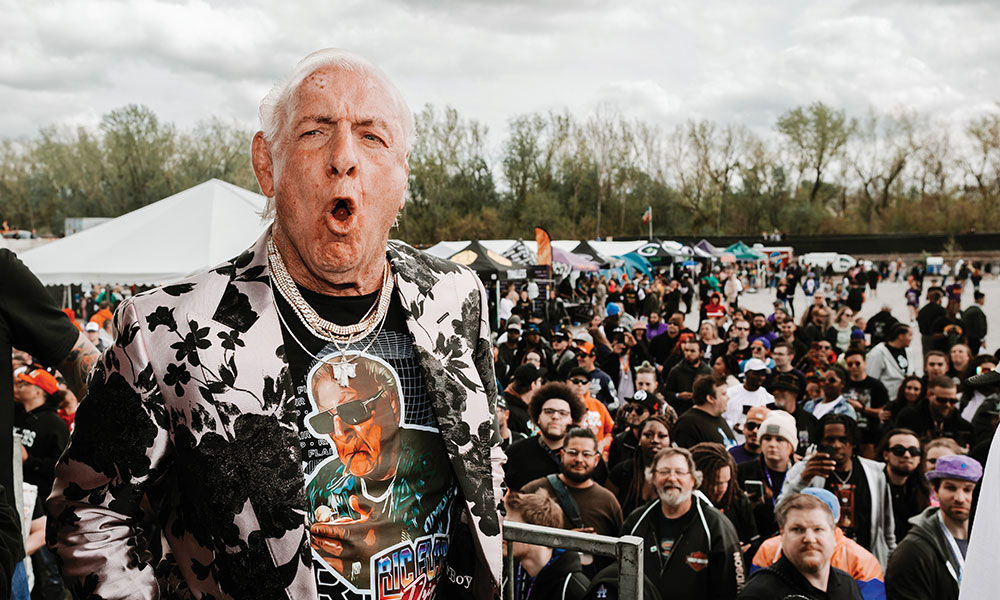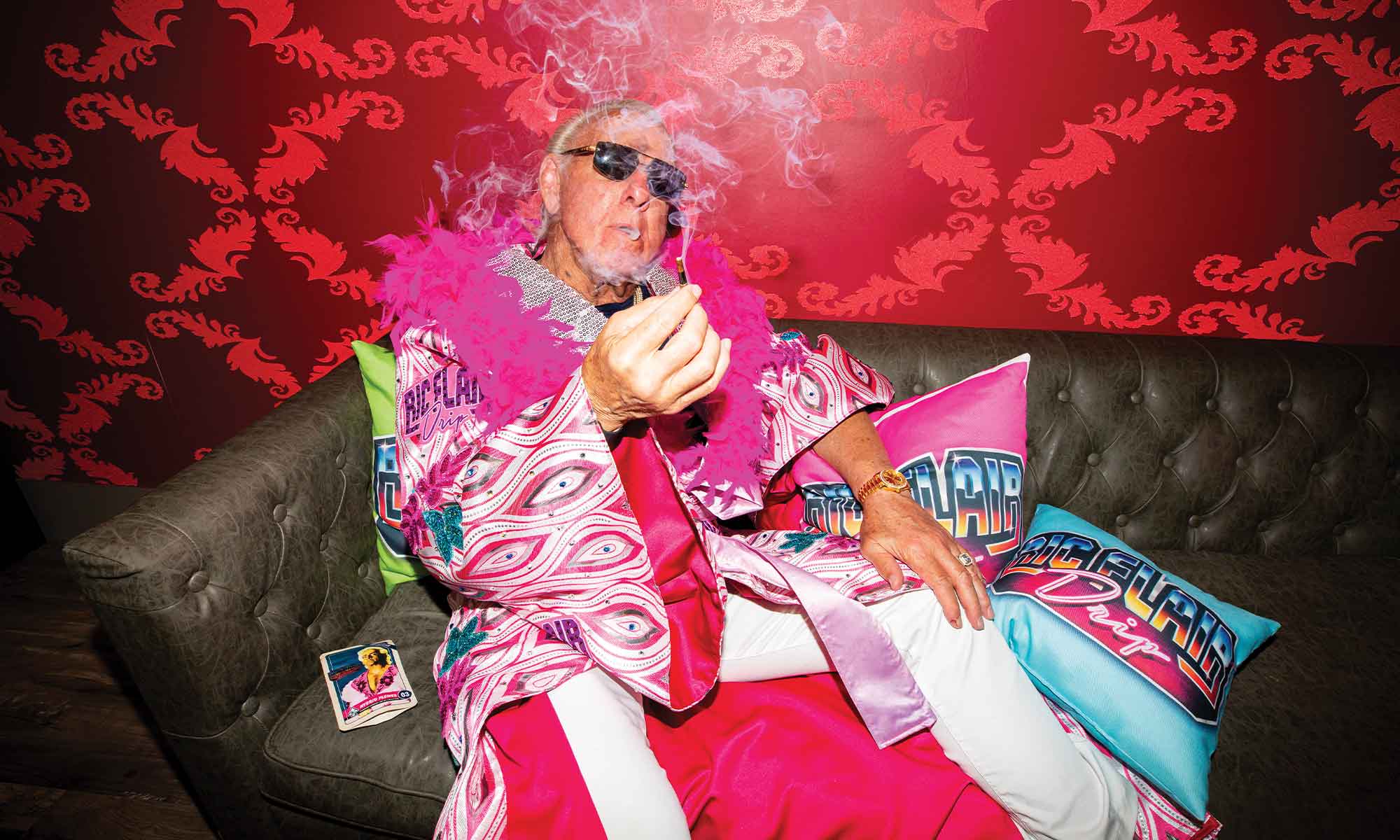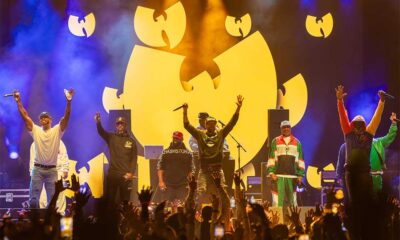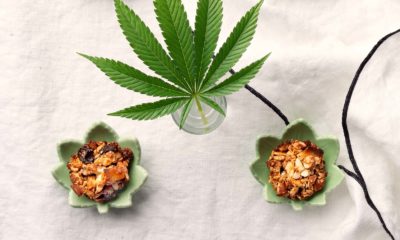Ric Flair’s Back In the Ring
The iconic professional wrestler pins down a new cannabis venture.
If you were one of the legions of fans who tuned in to the antics of early 1980s wrestling, yelling out “WOOOO!” should invoke a smile and more than a few fond memories. Wrestling hit differently back then: the lack of fear around script decisions, the chaotic personalities and the showmanship that brought it all together for our enjoyment. These men made it their lives’ mission to entertain us—and entertain they did.
One man who personified the excitement and paved the way for The Rock (Dwayne Johnson), Shawn Michaels and “Stone Cold” Steve Austin is none other than “Nature Boy” Ric Flair. Considered one of the greatest wrestlers of all time, Flair is a father, a successful entrepreneur and, more recently, a cannabis advocate. However, he’s also faced his fair share of adversities on the wild ride that’s been his storied career in professional wrestling.
“Back in the day, mental health wasn’t really a thing; we didn’t really know what anxiety was—we pushed through everything and used various drugs as coping mechanisms,” Flair says. “No one understands how badly anxiety affected me in the worst ways. I’m happy to be on the other end of that, and the happiest I’ve ever been.”
But it wasn’t always like that for Flair, who was an active name in the wrestling circuit for years before making a name for himself in professional wrestling. In the early 1980s, Flair was wrestling for Jim Crockett Promotions (JCP) as the “Nature Boy,” the persona he created that was an over-the-top ladies’ man, traveling 3,000 miles a week, city-by-city, putting on a show then hitting the local watering holes. Flair credits the song “Great Balls of Fire” by Jerry Lee Lewis for giving him the inspiration to start screaming “WOOOOO!” as part of his act—needless to say, it stuck. A few years later, as he was moving back and forth between organizations (WWF to WCW to WWE) is when Flair says he first encountered anxiety.

“Back then I had no idea what it was,” he says. “I went from being at the top of my game to producers wanting me to shave my head and change who I naturally felt inclined to be. It messed me up. I was loyal to NWA (a promotions company affiliated with WCW at the time, under Ted Turner’s leadership) and didn’t want to go back to WWF.”
And so began Flair’s relationship with Alprazolam (Xanax), specifically to help him wind down and get rest. “I’m happy to be one of the few wrestlers who never really had any pain—painkillers weren’t my thing. I just relied on Xanax for sleep,” he says.
Fortunately, Flair’s identity crisis was short-lived and by 1991, he was able to maintain his over-the-top character and ring-dominating performances, which drew viewers from across the country. “At the end of the day, it’s about catching the attention of Vince McMahon, at all costs,” Flair says. “He’s the greatest showman of our time; nothing is off the table if it means entertaining the crowds.”
The wrestlers of the 1980s and ’90s were known for performing at all costs—and Flair was no exception. “I wrestled injured all the time—we’d just numb whatever was bothering us at the time and keep going,” he says. While opioids and other narcotics became prevalent in the dressing room, Flair stuck to his guns and stayed clean. “I wrestled guys who were drunk all the time. They’d party in the dressing room just to keep themselves energized and performance-ready.”
And for years, that was the norm. Athletes—of any stripe—only had access to narcotics; cannabis was neither accessible nor accepted for daily use.

Fast-forward to 2023, and it’s clear we’re moving on. Cannabis has gone from fringe conversation to global front-page news. Canada federally legalized it; the US is seeing a slower federal acceptance, but acceptance, nonetheless. Several professional sports associations, including the NBA, have dropped it from their banned substances list. “The good thing is that there’s no stigma among the wrestlers around its use; of course, that’s unless they enter the ring impaired,” Flair says. “Unlike the old days, the WWE today has taken a strong stance around coming to the ring sober. It’s a big deal to them.”
You could say that life has come full circle for Flair since his 2008 retirement from full-time wrestling with WWE (the WWF’s new moniker). While Flair remained a household name, made appearances, and continued being his natural showman self, his career re-exploded in 2017 when rappers Offset and 21 Savage and producer Metro Boomin released the song “Ric Flair Drip,” which charted at number 71 on the Billboard Hot 100 and has since surpassed an astonishing 2 billion streams. “I had just gotten out of the hospital and had no representation; I’ve since trademarked ‘Ric Flair Drip’ and realized I needed to capitalize on the phrase moving forward,” Flair says. “Now that I have proper representation, I’m making more money than I ever have.”
That representation is Carma Holdings, the prolific brand house behind Mike Tyson and his Tyson 2.0 line of cannabis products, including the popular Tyson Bites ear-shaped edibles. Carma Holdings is led by serial entrepreneurs Adam Wilks and Chad Bronstein, whom Flair met during a chance encounter in Tampa. “I met Chad when our boats were side by side in Tampa. We just clicked,” Flair says.
Carma Holdings CEO Adam Wilks says that the brand has been an instant hit, onboarding 17 states in just 30 days. “Our accessories have ‘Ric Flair Drip’ all over them—not just in dispensaries, which command more than a thousand retail points in their own right,” Wilks says. “We have 50,000 retail touch points across the globe.”
And they’re only just getting started. In a few short years, Carma Holdings has become one of the parent companies to some of the fastest-growing brands in cannabis, including Tyson 2.0, Rick Flair Drip and
EVOL by the rapper, Future. The company also recently announced a partnership with another
prolific old school wrestler, Hulk Hogan.

It’s widely known that the cannabis industry isn’t all rainbows and unicorns. Most brands struggle—specifically those associated with celebrities. This makes Carma an outlier. “We’re successful because we’re empowering a sense of well-being,” Wilks says. “Our celebrity house of brands is driven by our commitment to authenticity, innovation and transformative experiences.”
While all this is happening, Ric Flair is living his best, most healthy life. Now 74, he’s still on the same daily exercise regime, traveling the world, preaching about how the “gummies saved me,” with the famed sparkle in his eye that’s won over his fans for the last four decades.
Will he ever wrestle again? You know we had to ask. “Absolutely, WOOOOO!” he says. “I have more in me, and I’m excited to keep going. I’d like to have another bout because I know what I did wrong before. I was away for a minute, and I got rusty,” Flair says. “What makes this new life in cannabis unique is that I enjoy going to work every day, regardless of what’s in store for me.”
This story was originally published in issue 49 of the print edition of Cannabis Now. Read it now on the Cannabis Now iTunes app.


























